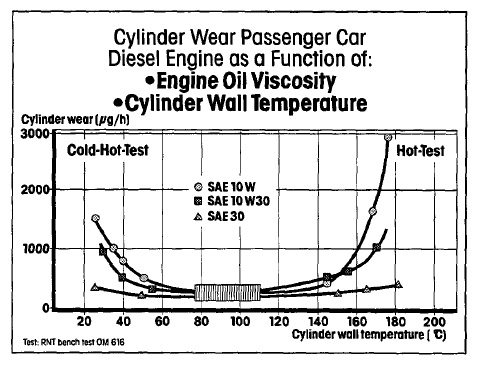I believe you can drop a grade with mono-grades, such as SAE40 instead of 20W50, SAE30 instead of 10W40 and so on.
Traditional VIIs permanently shear as they age, but they also shear temporarily in use ( %TVL ).
The minimum HTHS of 3.7 for an SAE40 is doable with an SAE 30, but, because it would be at the top end of the SAE30 specification of 12.5@100C, it may thicken out of grade from contaminates.
Chevron's Delo 15W30 is said to have an HTHS of 3.7 and a very high specific gravity which says mono-grade to me.
Would the same apply to an SAE20 instead of 0W30?
Let's say the SAE20 had a HTHS of 2.8 and the 0W30 3.2, but in operation temporary shear reduced the 0W30's HTHS to 2.7, thinner than the 0W30 when it counts.
One step further down the viscosity scale, an SAE16 could have a thicker base oil viscosity and higher HTHS during operation than a 0W20.
Which answers your question. Am I a 0W20 believer? Naw, if its cold enough to require 0W-XX, I'm staying indoors.
Traditional VIIs permanently shear as they age, but they also shear temporarily in use ( %TVL ).
The minimum HTHS of 3.7 for an SAE40 is doable with an SAE 30, but, because it would be at the top end of the SAE30 specification of 12.5@100C, it may thicken out of grade from contaminates.
Chevron's Delo 15W30 is said to have an HTHS of 3.7 and a very high specific gravity which says mono-grade to me.
Would the same apply to an SAE20 instead of 0W30?
Let's say the SAE20 had a HTHS of 2.8 and the 0W30 3.2, but in operation temporary shear reduced the 0W30's HTHS to 2.7, thinner than the 0W30 when it counts.
One step further down the viscosity scale, an SAE16 could have a thicker base oil viscosity and higher HTHS during operation than a 0W20.
Which answers your question. Am I a 0W20 believer? Naw, if its cold enough to require 0W-XX, I'm staying indoors.






